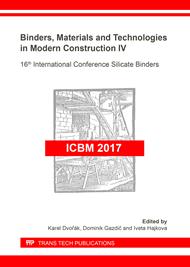p.236
p.242
p.248
p.254
p.259
p.265
p.271
p.276
p.282
Behavior of High Strength Concrete at High Temperatures
Abstract:
Concrete is considered as a non-combustible building material. However, at High-Performance Concrete (HPC) is due to its dense structure more likely to occur in explosive spalling. This results in lost of load bearing capacity function of concrete. This paper deals with design, production and testing of the cement-based concrete with the use of different fibers (polypropylene fibers and cellulose fibers). It also assesses the influence of high temperature on strength, visual changes of specimens, changes of surface and degradation of testing specimens due to heat loads according to normative heat curve and also according to hydrocarbon curve.
Info:
Periodical:
Pages:
259-264
Citation:
Online since:
June 2018
Authors:
Price:
Сopyright:
© 2018 Trans Tech Publications Ltd. All Rights Reserved
Share:
Citation:


